It all starts by completing the Science of Glacier Bay Interest Form. This lets us know that you’re serious about attending. If we have more than 24 people interested in moving forward and ready to pay a deposit, we will use a lottery system to select participants.
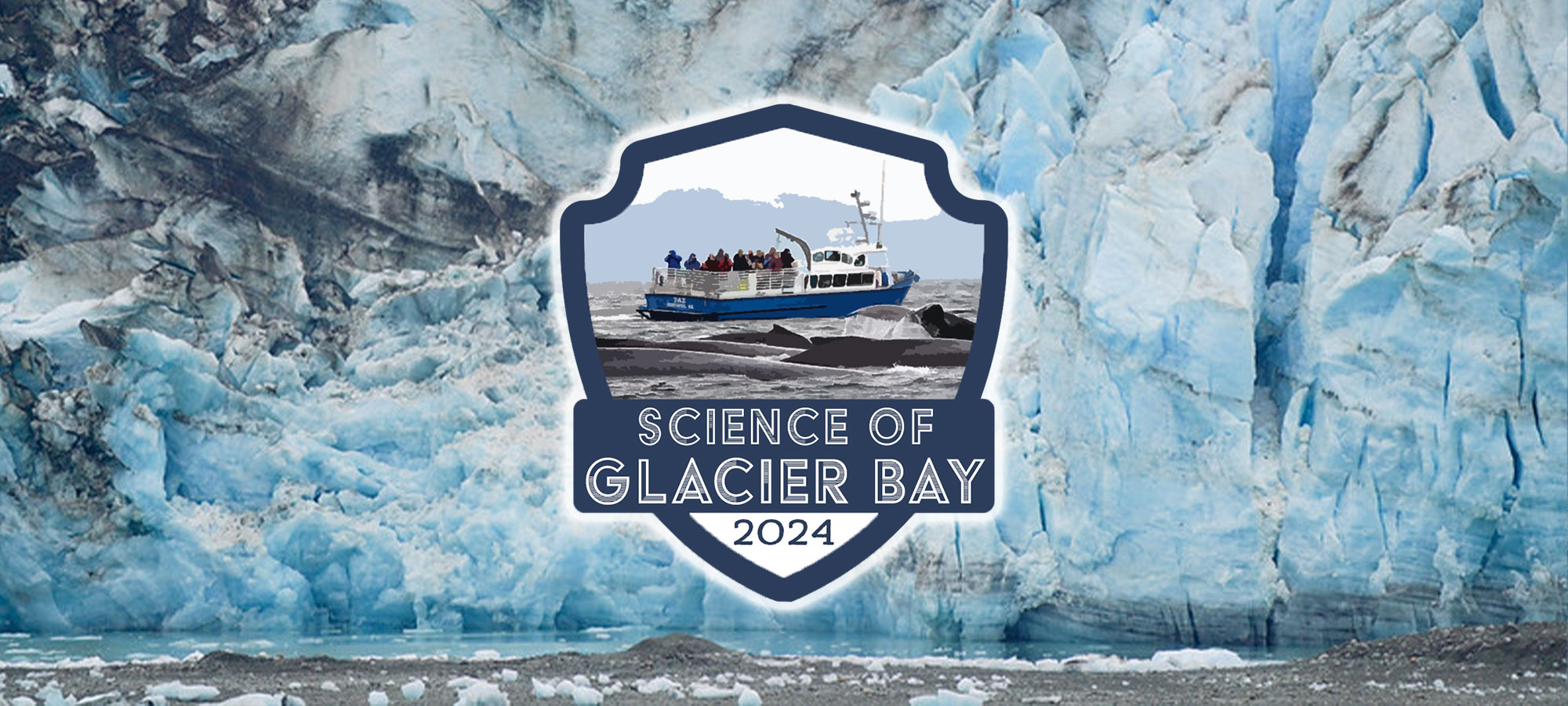
Science of Glacier Bay 2024
If you joined us for our Science at Sea Alaska experience in the past, you’ll love this new opportunity to explore Southeast Alaska with John Scheerens and the Spangler team in the summer of 2024. Past Science at Sea participants will receive an invitation to apply to attend in early October 2023.
The Icy Strait at Glacier Bay area endures as one of the most wildlife rich and ecologically complex ecosystems in the world. Glacier Bay was first established in 1916 as a scientific study preserve and remains today one of the most scientifically studied ecosystems anywhere. One of our many goals is to enhance the experience we enjoyed on our Glacier Bay Day of our Science at Sea cruise and get a much closer and in-depth look at this science-rich country.
This special Spangler experience is limited to 24 people (ages 16 and up) – that’s the capacity of our exclusive tour boat adventures, our hotel, and the backcountry limit in Glacier Bay National Park. Gustavus is not a huge tourist destination and facilities for large groups are very limited. Additionally, the Wilderness Act of 1964 limits the group size of backcountry travel which is part of the experience. The benefits of a small group are lots of interaction with our guides and leaders as well as your fellow participants.
As you might guess, this is a one-of-a-kind, totally customized experience. John Scheerens and his team of naturalists will lead you on daily adventures that will have you saying “BEST DAY EVER” over and over again.
Trip at a Glance
- The dates are June 25 – July 1, 2024. You’ll arrive and depart from Juneau, Alaska. Remember, this is not a cruise.
- Upon your arrival in Juneau, we will stay in a hotel in downtown Juneau (just a hop, skip and jump from the Red Dog Saloon). The next day we will transfer to Gustavus in chartered, nine passenger “bush” planes to the Beartrack Lodge in Gustavus.
- We will “home base” out of a delightful log country lodge called the Beartrack Inn in the small, remote “bush” village of Gustavus. It’s the gateway community to Glacier Bay National Park and the place John has called home for 41 years.
- Maximum occupancy is two people per room. Sorry… single rooms are unavailable, but two independent guests may share a room.
- Johh Scheerens and his team of naturalists will lead our explorations of the stunningly scenic and wildlife-rich area in and around Glacier Bay along with several local experts and guides.
- Throughout the adventure, we will utilize chartered planes, small tour boats, sea kayaks, vans, and maybe a friendly donkey to better understand and appreciate this vast and complex ecosystem.
This program will be considerably more active than our Science at Sea cruise. Hiking on rough trails or rocky shorelines, kayaking, and climbing on and off small boats on an unstable dock are part of the experience.

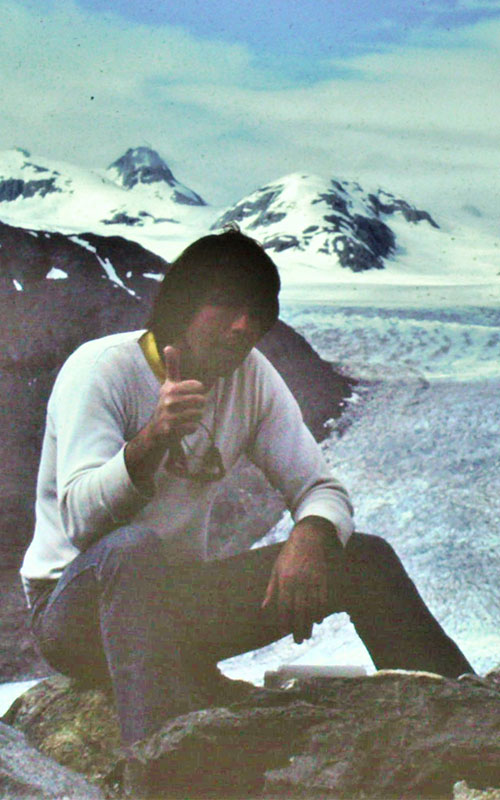

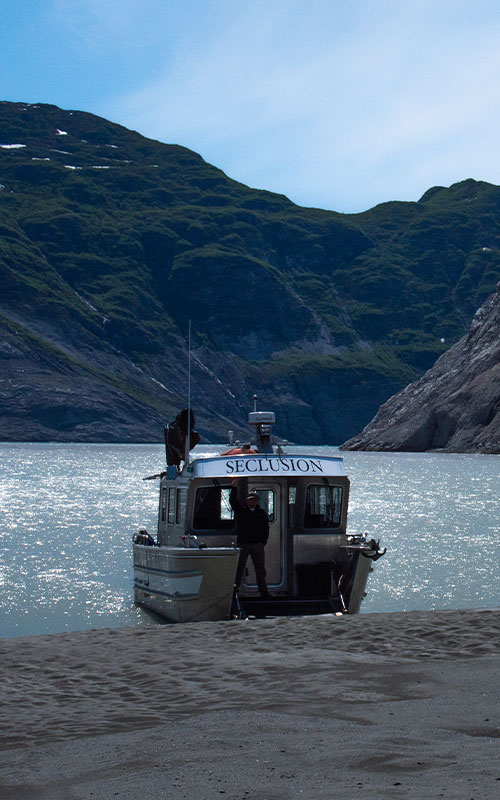
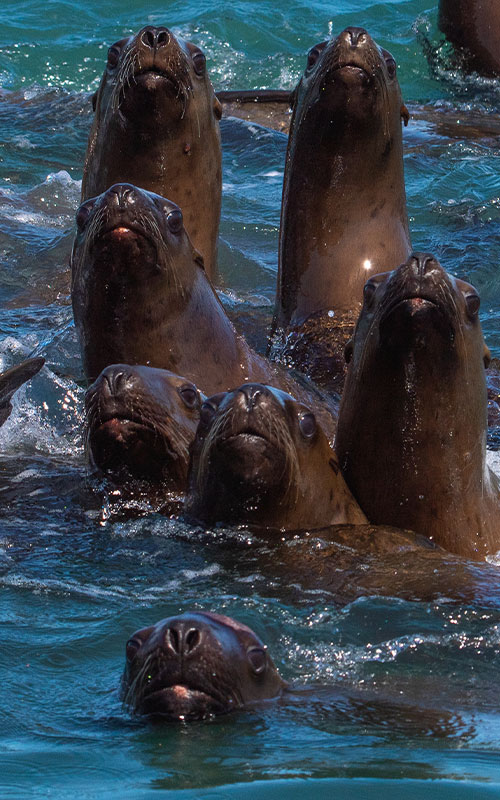
Who Should Attend?
- Science of Glacier Bay is offered exclusively to past participants of Science at Sea and Science of Iceland. Glacier Bay was a big part of Science at Sea, and we wish to acknowledge and reward those past participants who remember and wish to further explore the Glacier Bay country.
- The Science of Glacier Bay adventure will be a physically active experience. You should be able to walk 2-3 miles on a rough trail or rocky shoreline and comfortably climb two or three flights of stairs daily. You must also be able to manage your own luggage. There are no porters or luggage handlers. If you bring it, you need to be able to move it. Also, sufficient balance to safely navigate wooden docks is required. We will spend the bulk of our days out of doors.
- Gustavus is a remote “bush” community accessible only by airplane. Medical facilities are severely limited. The nearest doctor or hospital is at best a couple of hours away. EMT level medical assistance is available for emergencies. Prescription medicines are not available locally.
- Cell phone service and internet are spotty and undependable and maddeningly slow when they do work. The technology age has not yet embraced Gustavus. You can be reached at the hotel via land line telephone.
Daily Agenda
- Science of Glacier Bay begins and ends in Juneau, Alaska.
- June 25 — Arrive to Juneau Intentional Airport. Check into our downtown Juneau hotel. Stroll Juneau’s waterfront or explore the many shops and attractions of downtown Juneau. Enjoy dinner on your own. Join the Science at Sea team for a welcome get together reception and get to know your fellow explorers.
- June 26 — Enjoy a welcome breakfast before walking to the dock to board the M/V Adventure Bound for an all-day excursion to Tracy Arm, one of Alaska’s most spectacular glacial fjords. Tracy Arm is a thirty-mile-long narrow fjord that twists and turns under massive 1,000-foot granite cliffs, glittering waterfalls, and hanging glaciers at every turn. We’ll watch for wildlife while we glide between massive icebergs calved from the magnificent Sawyer Glacier at the head of the fjord.
- Following our Tracy Arm excursion, we bus back to Juneau International Airport for a twenty-minute charter flight to Gustavus and Glacier Bay. Our smaller nine passenger Caravan aircraft flying at low altitudes afford us fantastic viewing of the stunning landscape and glacial fjords.
- June 27 — Following breakfast we bus through the charming small bush community of Gustavus to the city dock and board the M/V Taz, a 50-foot former crew boat for a full day excursion into Icy Strait, the Inaian Islands and the Cross Sound area along the southern boundary of Glacier Bay National Park.
- June 28 — Following breakfast we bus to Bartlett Cove, location of Glacier Bay National Park Service headquarters and the Glacier Bay Lodge. Once there, we will divide into two groups. The first group will join Glacier Bay Sea Kayak guides for a half day sea kayak adventure in Bartlett Cove and the Beardslee Islands. The other group will embark on a wilderness hike to Cooper’s Notch along the shoreline at the edge of the old growth rainforest.
- Following our morning adventures, we’ll enjoy lunch at the Glacier Bay Lodge. Following lunch, we flip flop the groups and the second group kayaks while the first group hikes. There is free time after our adventures conclude to explore the Bartlett Cove area on your own.
- June 29 — After breakfast this morning we bus back to the Gustavus dock and again board the M/V Taz for another exciting excursion into Icy Strait and the Glacier Bay area. We’ll explore Point Adolphus, a well-known Humpback whale feeding area and observe sea otters in Idaho Inlet. We’ll go ashore and for a visit to the Tidelines Institute, a research institute on Lemesurier Island that studies the effects of warming and acidification on marine ecosystems.
- June 30 — After breakfast we’ll take a guided hike in the Nature Conservatory on the delightful Nagoonberry Trail. The trail winds through the coastal rainforest then emerges onto a wild sandy beach before the final leg through a wildflower filled meadow. Following a BBQ lunch, several optional activities are offered to pursue on your own this afternoon, our last full day.
- July 1 — This morning, John wraps up our exciting week together with some final thoughts before we bus back to the airport for another fantastic charter flight to Juneau where we sadly will say our goodbyes.
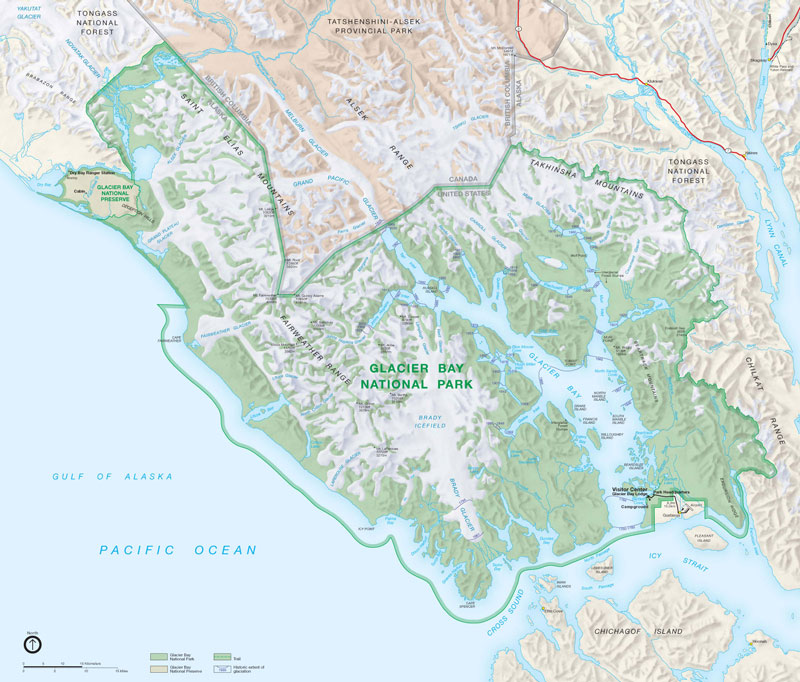
Glacier Bay National Park Map


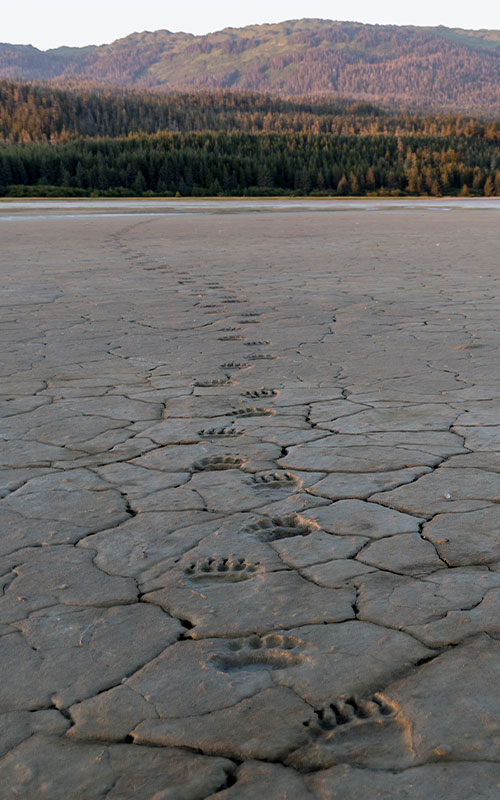
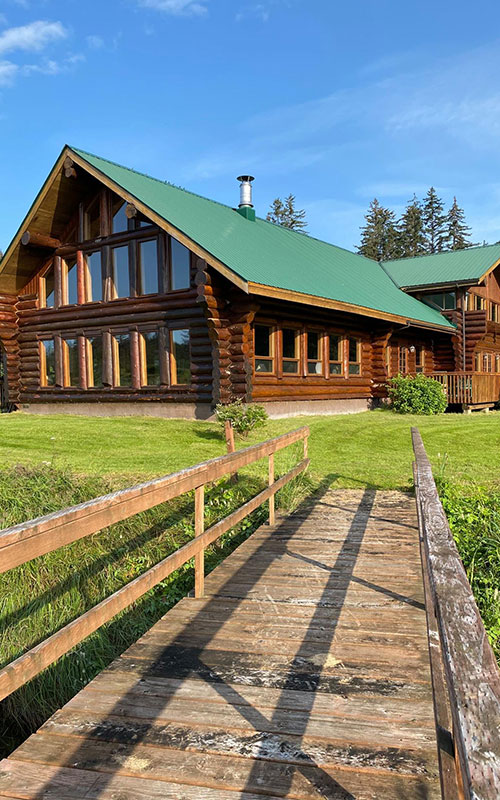
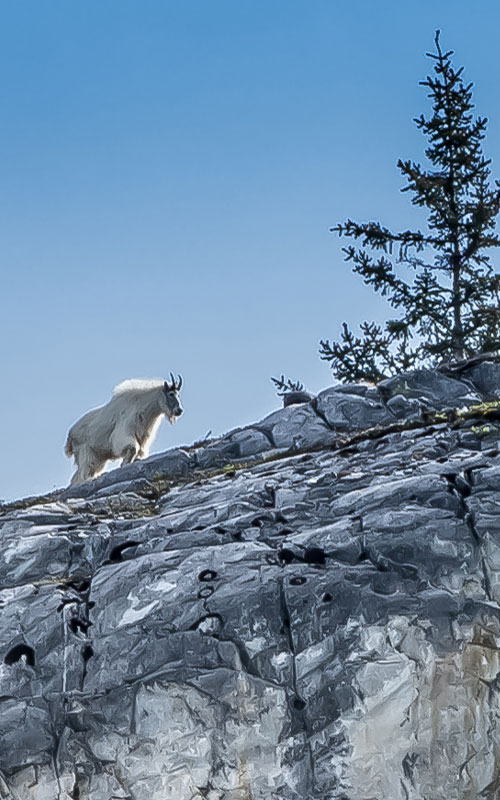
What’s the Cost?
- Cost of the trip is $6,950 per person (double occupancy), plus airfare to and from Juneau, Alaska and any personal expenses. Double occupancy means sharing a room with your spouse, partner, friend, or other independent single. Single supplements are not available for this trip.
- See everything that’s included below.
What’s Included?
- First night kick-off party in Juneau
- Ground transportation throughout Juneau and Gustavus.
- Air charter flights between Juneau and Gustavus via 9 passenger Caravan aircraft
- Three exclusive boat tours
- Six nights lodging (1 night Juneau, 5 nights Gustavus)
- All meals except first night in Juneau (breakfast included on departure day}
- All excursions which are exclusive and customized to our group – a similar commercial trip does not exist – this is a one-of-a-kind program designed exclusively for past Science at Sea participants.
- Individual interactions with tour leaders and local guides and experts
- As always, a few Steve Spangler surprises
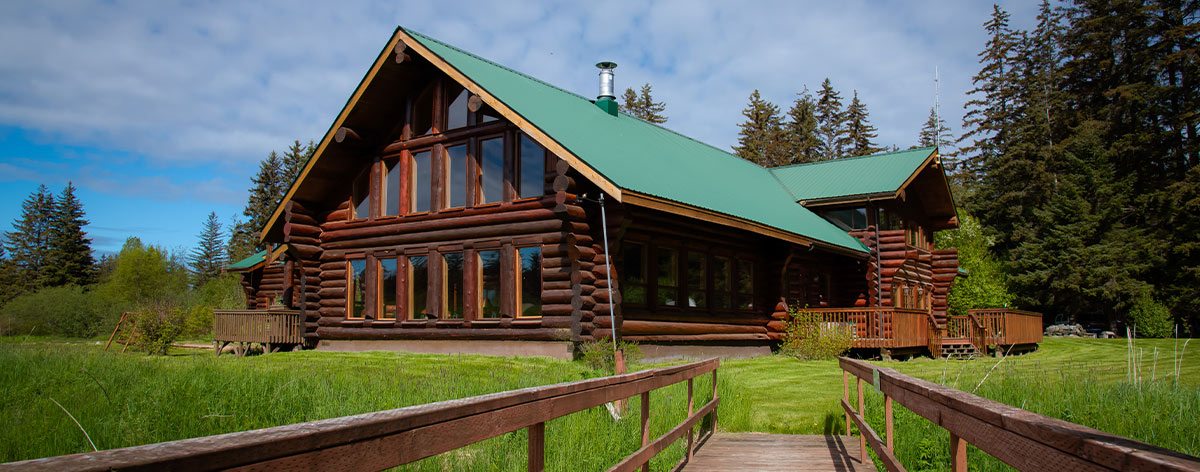
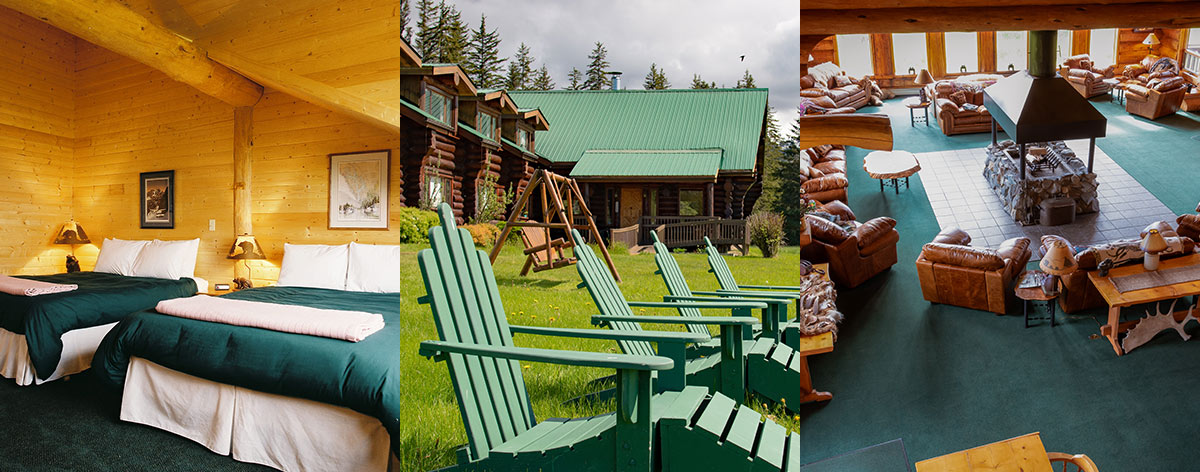
BEARTRACK INN – HOME BASE
We will “home base” out of a delightful log country lodge called the Beartrack Inn in the small, remote “bush” village of Gustavus. It’s the gateway community to Glacier Bay National Park and the place John has called home for 41 years.
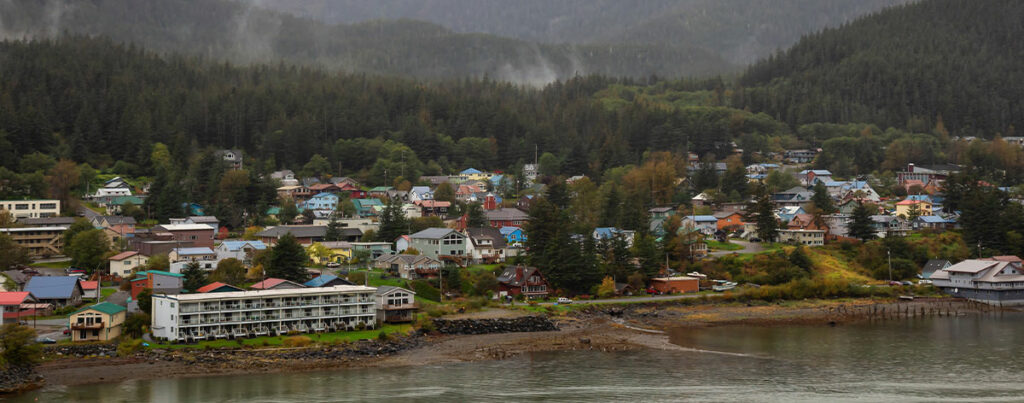
JUNEAU
Arrive to Juneau Intentional Airport. Check into our downtown Juneau hotel. Stroll Juneau’s waterfront or explore the many shops and attractions of downtown Juneau. Enjoy dinner on your own. Join the Science at Sea team for a welcome get together reception and get to know your fellow explorers.

TRACY ARM
Tracy Arm is a thirty-mile-long narrow fjord that twists and turns under massive 1,000-foot granite cliffs, glittering waterfalls, and hanging glaciers at every turn. We’ll watch for wildlife while we glide between massive icebergs calved from the magnificent Sawyer Glacier at the head of the fjord.
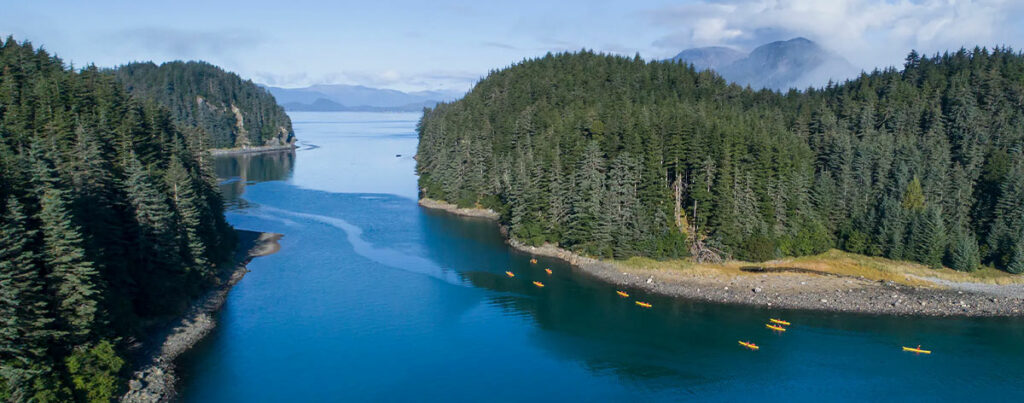
FULL DAY EXCURSION TO ICY STRAIT
Full day excursion into Icy Strait, the Inaian Islands and the Cross Sound area along the southern boundary of Glacier Bay National Park.
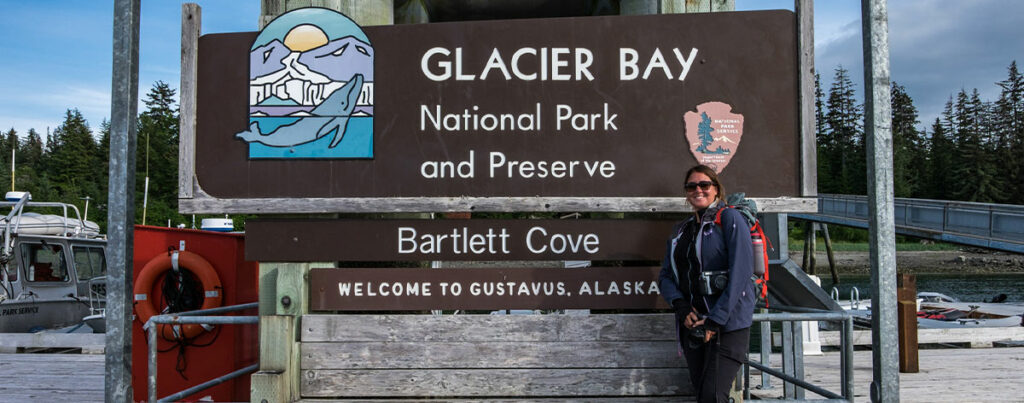
BARTLETT COVE
Following breakfast we bus to Bartlett Cove, location of Glacier Bay National Park Service headquarters and the Glacier Bay Lodge. Once there, we will divide into two groups. The first group will join Glacier Bay Sea Kayak guides for a half day sea kayak adventure in Bartlett Cove and the Beardslee Islands. The other group will embark on a wilderness hike to Cooper’s Notch along the shoreline at the edge of the old growth rainforest.
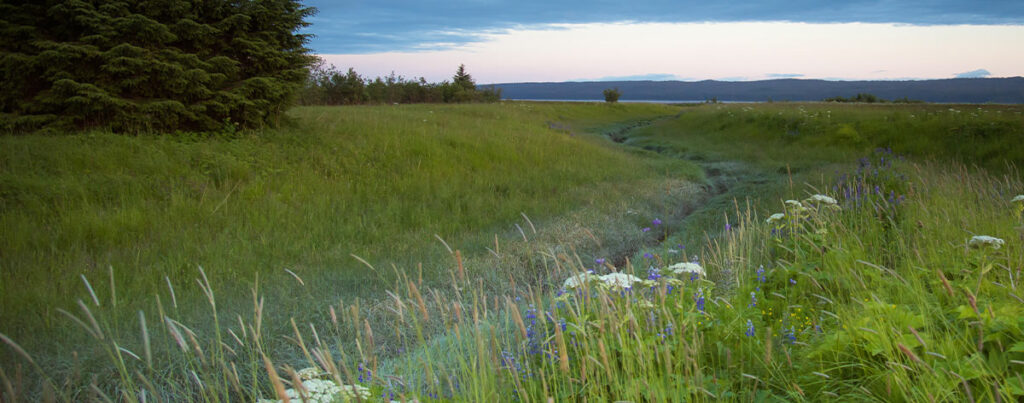
GUIDED HIKE
We’ll take a guided hike in the Nature Conservatory on the delightful Nagoonberry Trail. The trail winds through the coastal rainforest then emerges onto a wild sandy beach before the final leg through a wildflower filled meadow.
Questions?
In addition to the information provided above, we’ve tried to anticipate a few of your questions below. You’re welcome to call John Scheerens at (520) 257-6582 or email your questions to [email protected].
HOW WILL THE REGISTRATION PROCESS WORK?
WHAT’S THE DEPOSIT? WHAT IS THE CANCELLATION POLICY?
- We are collecting a deposit of $2,500 per person to reserve your spot.
- The deposit (less $200 processing fee) is fully refundable until December 31, 2023. This trip is limited to just 24 participants so please be serious about reserving space. If we (Team Spangler) cancel the trip prior to January 31, 2024, you will receive a full refund of your deposit.
- The remaining balance of your registration fee will be automatically charged to the credit card used at registration on February 1, 2024.
- If you cancel your registration between December 31, 2023, and January 31, 2024 you will be eligible for 50% of your $2,500 deposit.
- If you cancel your registration between February 1, 2024, and March 15, 2024 you will be eligible for a 50% refund of the full payment collected.
- No refunds will be issued after March 15, 2024.
- We are aware unforeseen factors can result in the cancellation of a trip. In the event of such a situation we will work with our vendors and travel partners to ensure full refunds.
HOW DO I GET TO JUNEAU? WHEN SHOULD I PLAN TO ARRIVE OR DEPART?
There are usually 5 or 6 flights a day in and out of Juneau, most via Alaska Airlines.
None of them direct. You will have to change planes and fly through Seattle or Anchorage. It can make for a long day if you are coming from the east coast. Plan to arrive in Juneau on or before June 25. Our first full day begins on June 26. Our charter flights from Gustavus back to Juneau get you into Juneau late morning July 1. If you plan to spend time in Juneau before or after our program, John can recommend hotels and activities.
WHAT MIGHT AIRFARE COST FOR THIS TRIP?
Alaska Airlines currently lists flights on June 25, Seattle to Juneau between $160 – $270 (coach class) per person one way. From New York (Kennedy) to Juneau between $265 – $485. From Chicago $260 – $425.
HOW DO I GET FROM THE AIRPORT TO OUR DOWNTOWN JUNEAU HOTEL?
Juneau airport is small. One of the Spangler team will meet you there and get you transported to our downtown hotel.
ARE CHILDREN ALLOWED TO ATTEND?
At the request of our travel guides and coordinators in Gustavus, we are only accepting children ages 16 years old and up.
HOW MANY PEOPLE WILL BE ON THE TRIP WITH ME?
This special experience is limited to 24 participants. Hotel space, tour boat maximum occupancy, and backcountry limitations require a very limited number of participants.
WILL EVERY MOMENT OF OUR ADVENTURE BE SCHEDULED?
No, but we have a lot of great things for you to do and see packed into each day. There’s some free time in the evening to stroll around the meadows that surround the Lodge, and you’ll have some free time to explore Bartlett Cove at Park Headquarters and, of course the charming rural community of Gustavus.
DO I NEED TO PURCHASE VACATION INSURANCE?
It’s always a good idea to have travel insurance for something like this. Keep in mind Gustavus is well off the beaten path of traditional Alaska tours and an emergency or medical evacuation can be extremely costly.
HOW MUCH LUGGAGE CAN I BRING?
There is no limit from our standpoint but of course airlines have limitations and fees for excess baggage. Small bush planes are very weight sensitive – your luggage will be weighed and so will you. In other words, we can’t have some of those GIANT suitcases that you brought to Science at Sea (yes, we were watching).
WHAT SHOULD I WEAR – WHAT GEAR SHOULD I BRING?
Glacier Bay even in summer is generally wet and cool. Layered dress is most appropriate as weather can easily and often does change throughout the day. Fleece, wool, or other modern fabrics that dry quickly and keep you warm when wet are best. Rain gear is a must. There is no need to go out and buy top of the line rain gear but bring gear substantial enough to last a few days of hard use.
Bring a hat and a light jacket. Comfortable walking shoes are also a must have. They will likely get wet and muddy so bring a comfortable pair for lounging around the Lodge in the evening.
For evenings, casual clothes are fine. A small backpack will come in very handy. We are spending a lot of time on the water and glare can be bad even on cloudy days – bring sunglasses and sunscreen.
Sundries, batteries, chargers, etc are very limited and expensive – bring what you need with you or buy them in Juneau before you come to Gustavus. If you are one of those rare photographers who still use film bring it with you as it will be impossible to find here. Prescriptions are not impossible but difficult and expensive to fill and take time.
A detailed suggested gear and clothing checklist will be forwarded to registered participants well prior to our start date.
WHAT ABOUT COMPUTERS, CELL PHONES, INTERNET?
Cell coverage and internet access in Juneau works just fine. Not so much in Gustavus. Cell coverage is very spotty and can’t be counted on. Internet service is much the same and if you can get it it’s via satellite dish and maddingly slow. Computers can be found at the libraries in both Gustavus and Juneau, but hours are very limited.
WHAT WILL THE WEATHER BE LIKE?
Late June is an excellent time of year to visit Southeast Alaska as the daylight hours are the longest of the year – sunrise by 4:00 AM, sunset near 11:00 PM. We also experience our lightest rainfall of the year but having said that this is a rainy part of the world exceeding 90 inches annually. It is highly likely that we will endure some rain. Temperatures run from a low of 55ºF to a normal high of perhaps 75ºF, however, like everywhere in recent years temperatures have increased, and it’s possible to get as high as 85ºF.
